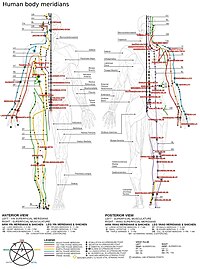
Photo from wikipedia
Objective End-of-life interventions should be predicated on consensus understanding of patient wishes. Written documents are not always understood; adding a video testimonial/message (VM) might improve clarity. Goals of this study… Click to show full abstract
Objective End-of-life interventions should be predicated on consensus understanding of patient wishes. Written documents are not always understood; adding a video testimonial/message (VM) might improve clarity. Goals of this study were to (1) determine baseline rates of consensus in assigning code status and resuscitation decisions in critically ill scenarios and (2) determine whether adding a VM increases consensus. Methods We randomly assigned 2 web-based survey links to 1366 faculty and resident physicians at institutions with graduate medical education programs in emergency medicine, family practice, and internal medicine. Each survey asked for code status interpretation of stand-alone Physician Orders for Life-Sustaining Treatment (POLST) and living will (LW) documents in 9 scenarios. Respondents assigned code status and resuscitation decisions to each scenario. For 1 of 2 surveys, a VM was included to help clarify patient wishes. Results Response rate was 54%, and most were male emergency physicians who lacked formal advanced planning document interpretation training. Consensus was not achievable for stand-alone POLST or LW documents (68%–78% noted “DNR”). Two of 9 scenarios attained consensus for code status (97%–98% responses) and treatment decisions (96%–99%). Adding a VM significantly changed code status responses by 9% to 62% (P ⩽ 0.026) in 7 of 9 scenarios with 4 achieving consensus. Resuscitation responses changed by 7% to 57% (P ⩽ 0.005) with 4 of 9 achieving consensus with VMs. Conclusions For most scenarios, consensus was not attained for code status and resuscitation decisions with stand-alone LW and POLST documents. Adding VMs produced significant impacts toward achieving interpretive consensus.
Journal Title: Journal of Patient Safety
Year Published: 2017
Link to full text (if available)
Share on Social Media: Sign Up to like & get
recommendations!